Abstract
Bengkala is an Indonesian village located on the north shore of Bali that has existed for over 700 years. Currently, 2.2% of the 2185 people in this village have profound congenital deafness. In response to the high incidence of deafness, the people of Bengkala have developed a village specific sign language which is used by many of the hearing and deaf people. Deafness in Bengkala is congenital, sensorineural, non-syndromal, and caused by a fully penetrant autosomal recessive mutation at the DFNB3 locus. The frequency of the DFNB3 mutation is estimated to be 9.4% among hearing people who have a 17.2% chance of being heterozygous for DFNB3.
Full text
PDF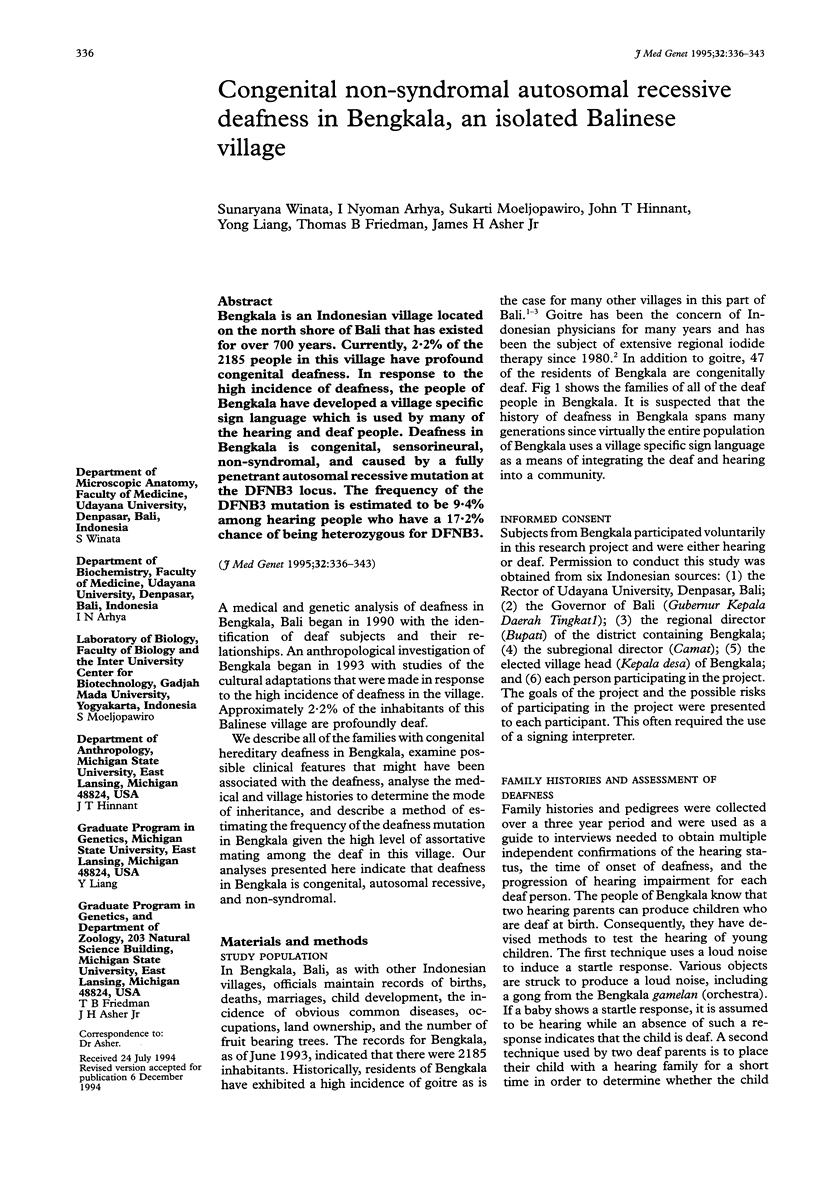
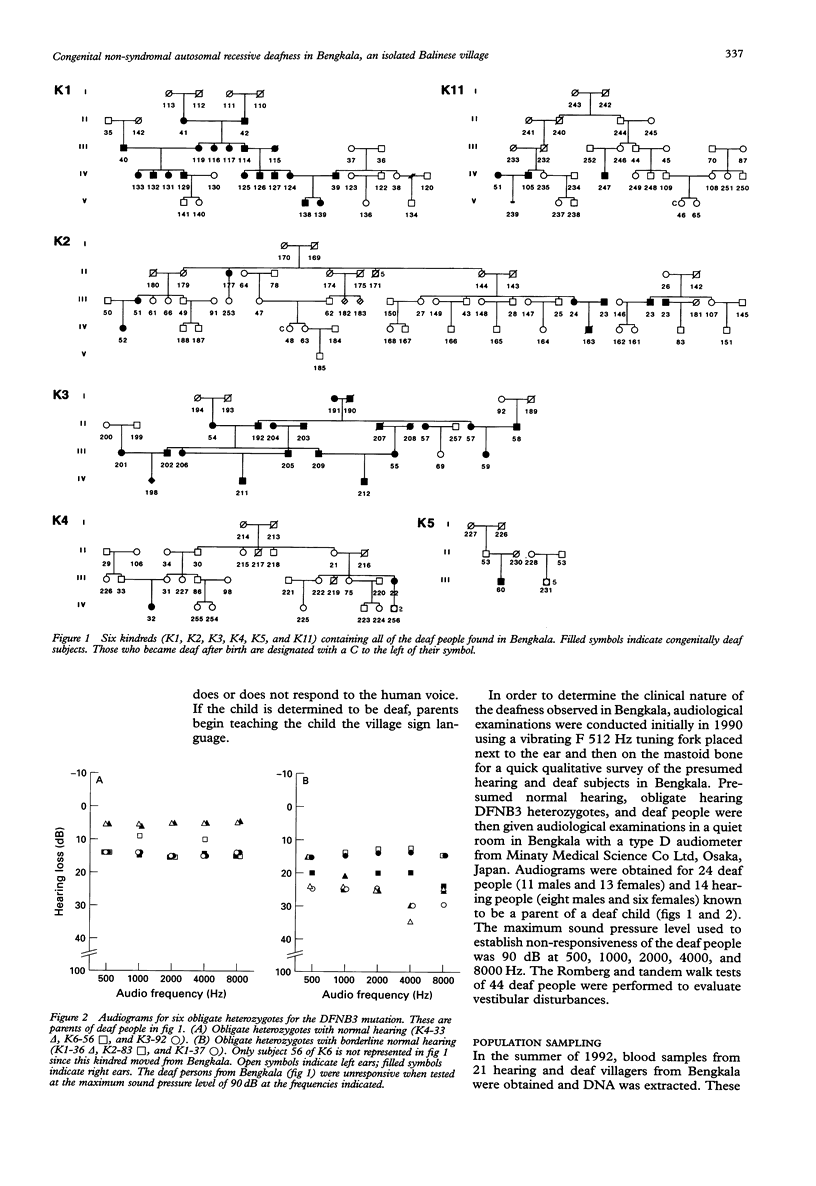
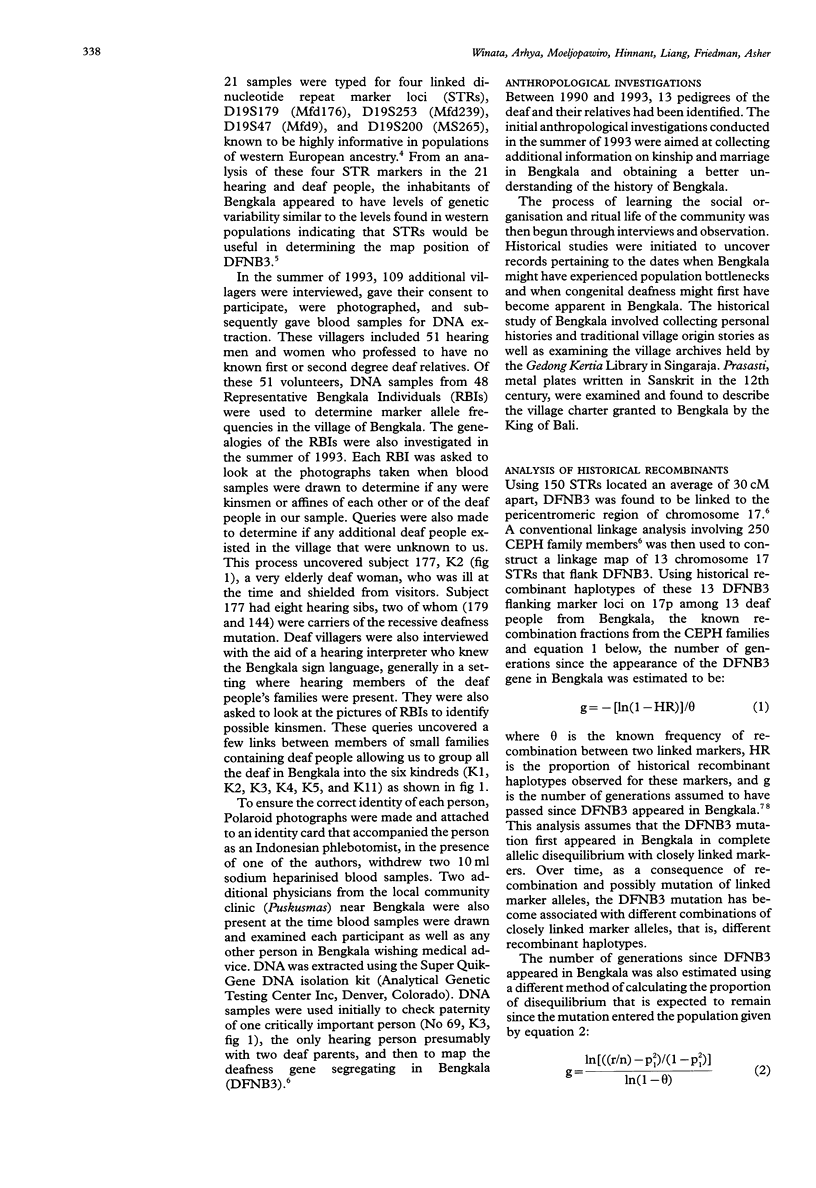
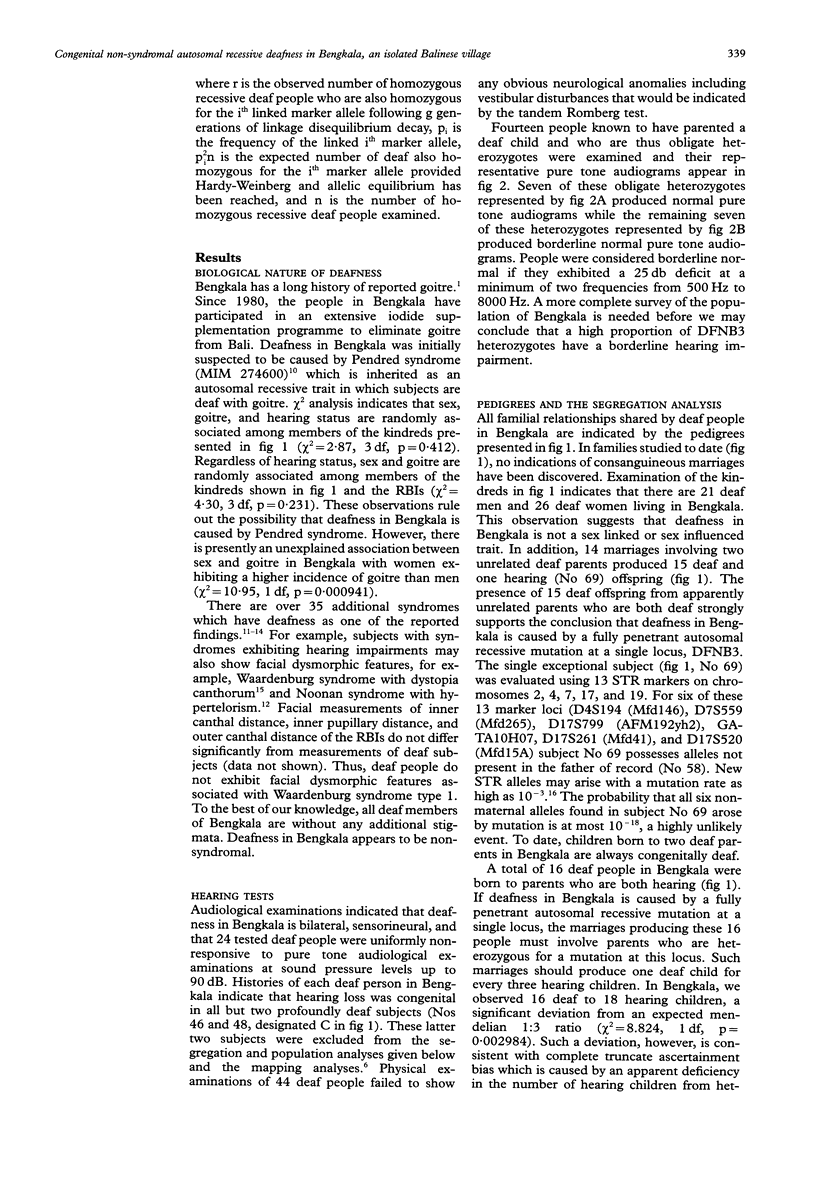
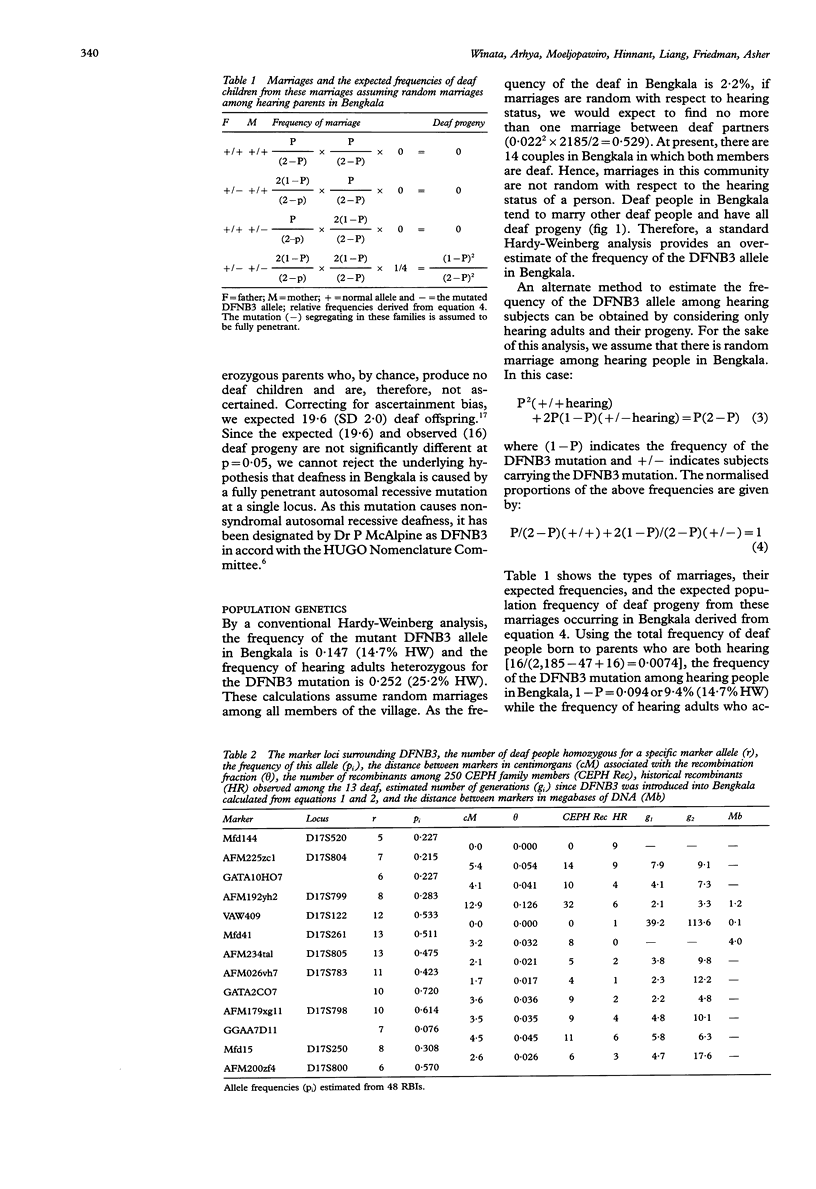
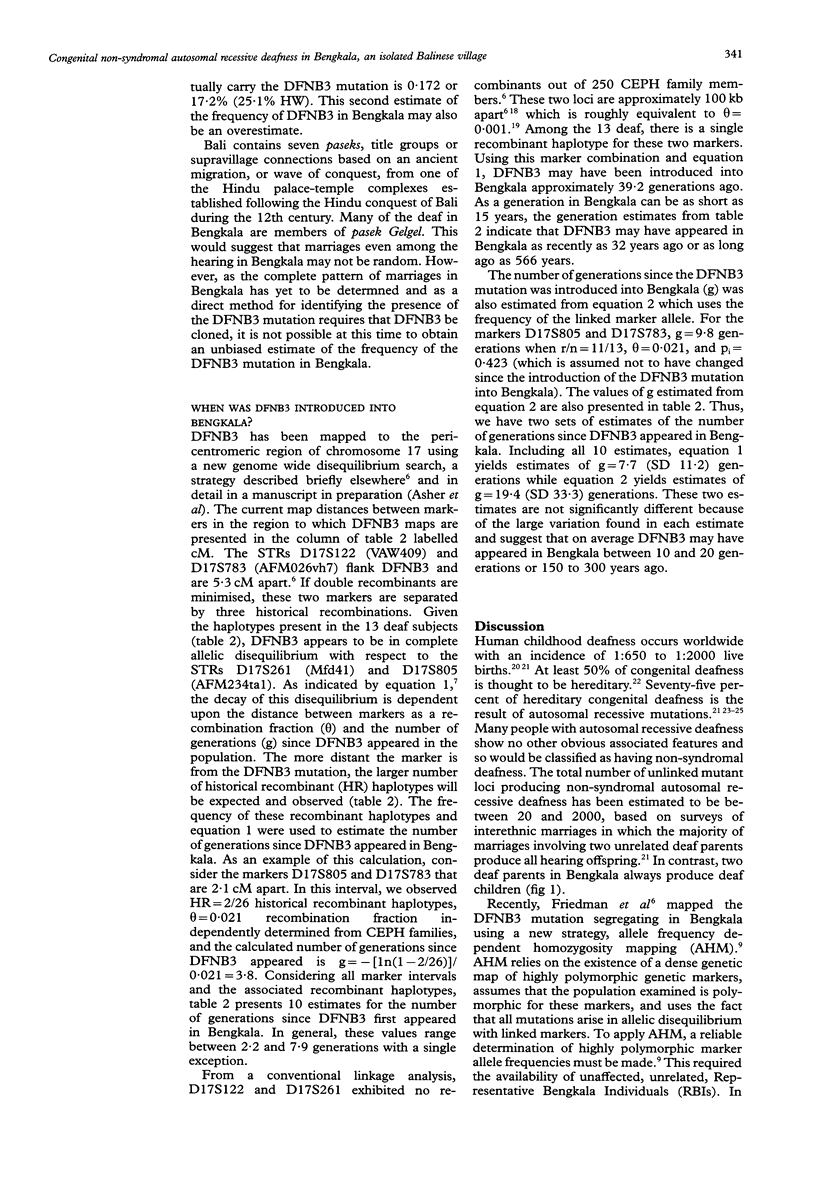
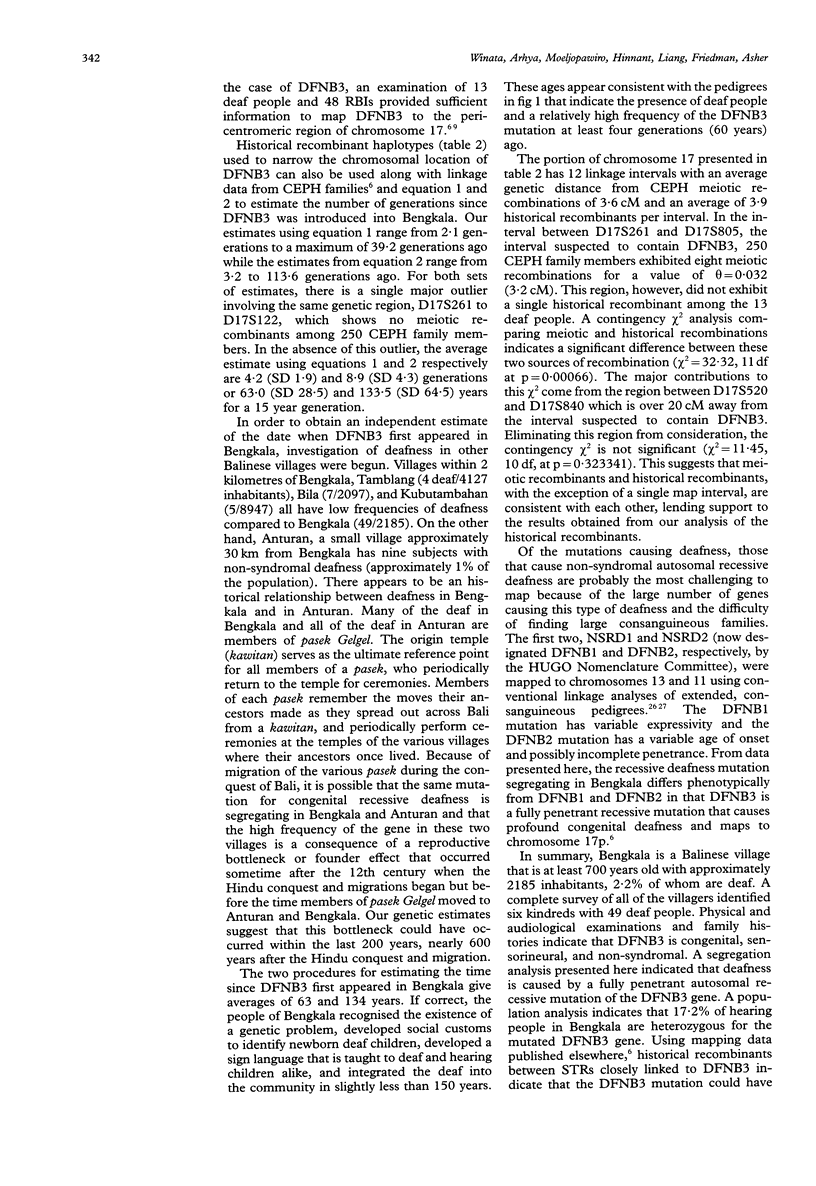
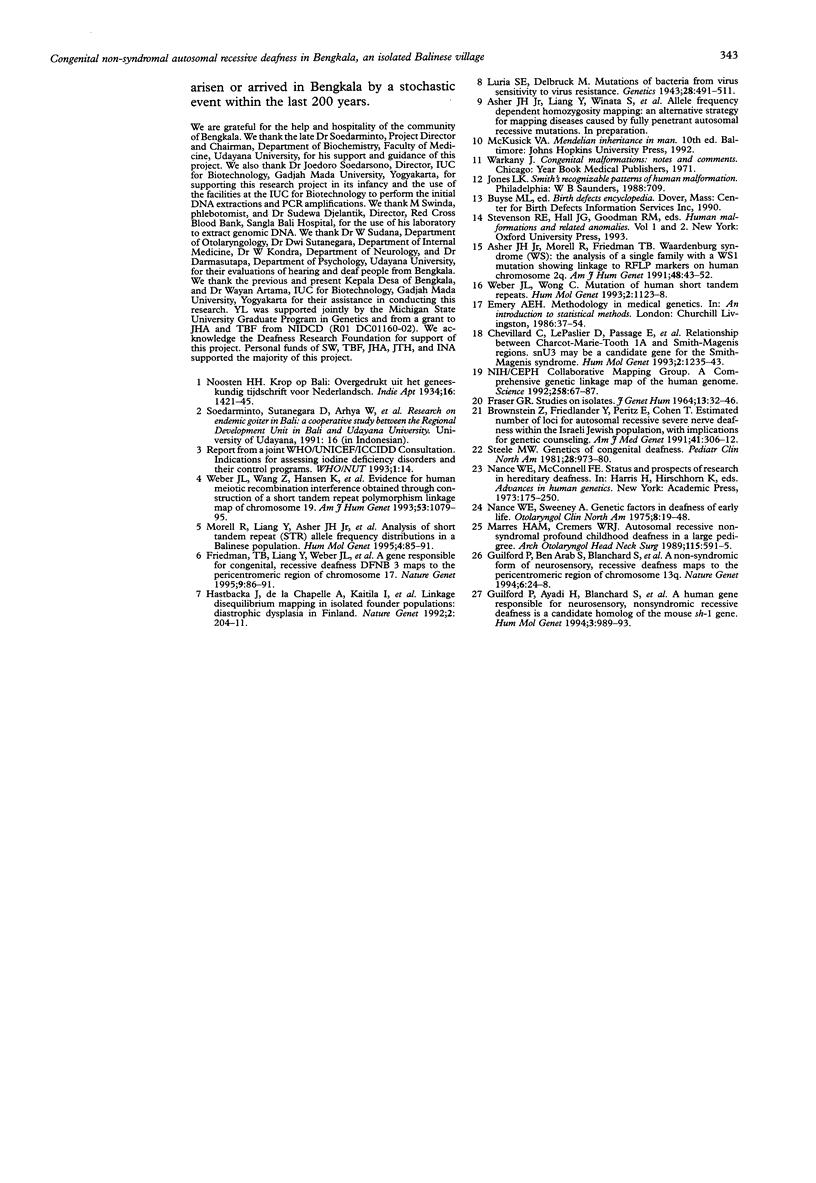
Selected References
These references are in PubMed. This may not be the complete list of references from this article.
- Brownstein Z., Friedlander Y., Peritz E., Cohen T. Estimated number of loci for autosomal recessive severe nerve deafness within the Israeli Jewish population, with implications for genetic counseling. Am J Med Genet. 1991 Dec 1;41(3):306–312. doi: 10.1002/ajmg.1320410309. [DOI] [PubMed] [Google Scholar]
- Chevillard C., Le Paslier D., Passage E., Ougen P., Billault A., Boyer S., Mazan S., Bachellerie J. P., Vignal A., Cohen D. Relationship between Charcot-Marie-Tooth 1A and Smith-Magenis regions. snU3 may be a candidate gene for the Smith-Magenis syndrome. Hum Mol Genet. 1993 Aug;2(8):1235–1243. doi: 10.1093/hmg/2.8.1235. [DOI] [PubMed] [Google Scholar]
- FRASER G. R. STUDIES IN ISOLATES. J Genet Hum. 1964;13:32–46. [PubMed] [Google Scholar]
- Friedman T. B., Liang Y., Weber J. L., Hinnant J. T., Barber T. D., Winata S., Arhya I. N., Asher J. H., Jr A gene for congenital, recessive deafness DFNB3 maps to the pericentromeric region of chromosome 17. Nat Genet. 1995 Jan;9(1):86–91. doi: 10.1038/ng0195-86. [DOI] [PubMed] [Google Scholar]
- Guilford P., Ayadi H., Blanchard S., Chaib H., Le Paslier D., Weissenbach J., Drira M., Petit C. A human gene responsible for neurosensory, non-syndromic recessive deafness is a candidate homologue of the mouse sh-1 gene. Hum Mol Genet. 1994 Jun;3(6):989–993. doi: 10.1093/hmg/3.6.989. [DOI] [PubMed] [Google Scholar]
- Guilford P., Ben Arab S., Blanchard S., Levilliers J., Weissenbach J., Belkahia A., Petit C. A non-syndrome form of neurosensory, recessive deafness maps to the pericentromeric region of chromosome 13q. Nat Genet. 1994 Jan;6(1):24–28. doi: 10.1038/ng0194-24. [DOI] [PubMed] [Google Scholar]
- Hästbacka J., de la Chapelle A., Kaitila I., Sistonen P., Weaver A., Lander E. Linkage disequilibrium mapping in isolated founder populations: diastrophic dysplasia in Finland. Nat Genet. 1992 Nov;2(3):204–211. doi: 10.1038/ng1192-204. [DOI] [PubMed] [Google Scholar]
- Luria S. E., Delbrück M. Mutations of Bacteria from Virus Sensitivity to Virus Resistance. Genetics. 1943 Nov;28(6):491–511. doi: 10.1093/genetics/28.6.491. [DOI] [PMC free article] [PubMed] [Google Scholar]
- Marres H. A., Cremers C. W. Autosomal recessive nonsyndromal profound childhood deafness in a large pedigree. Audiometric features of the affected persons and the obligate carriers. Arch Otolaryngol Head Neck Surg. 1989 May;115(5):591–595. doi: 10.1001/archotol.1989.01860290049013. [DOI] [PubMed] [Google Scholar]
- Morell R., Liang Y., Asher J. H., Jr, Weber J. L., Hinnant J. T., Winata S., Arhya I. N., Friedman T. B. Analysis of short tandem repeat (STR) allele frequency distributions in a Balinese population. Hum Mol Genet. 1995 Jan;4(1):85–91. doi: 10.1093/hmg/4.1.85. [DOI] [PubMed] [Google Scholar]
- Nance W. E., McConnell F. E. Status and prospects of research in hereditary deafness. Adv Hum Genet. 1973;4:173–250. doi: 10.1007/978-1-4615-8261-8_3. [DOI] [PubMed] [Google Scholar]
- Nance W. E., Sweeney A. Symposium on sensorineural hearing loss in children: early detection and intervention. Genetic factors in deafness of early life. Otolaryngol Clin North Am. 1975 Feb;8(1):19–48. [PubMed] [Google Scholar]
- Steele M. W. Genetics of congenital deafness. Pediatr Clin North Am. 1981 Nov;28(4):973–980. doi: 10.1016/s0031-3955(16)34082-2. [DOI] [PubMed] [Google Scholar]
- Weber J. L., Wang Z., Hansen K., Stephenson M., Kappel C., Salzman S., Wilkie P. J., Keats B., Dracopoli N. C., Brandriff B. F. Evidence for human meiotic recombination interference obtained through construction of a short tandem repeat-polymorphism linkage map of chromosome 19. Am J Hum Genet. 1993 Nov;53(5):1079–1095. [PMC free article] [PubMed] [Google Scholar]
- Weber J. L., Wong C. Mutation of human short tandem repeats. Hum Mol Genet. 1993 Aug;2(8):1123–1128. doi: 10.1093/hmg/2.8.1123. [DOI] [PubMed] [Google Scholar]


